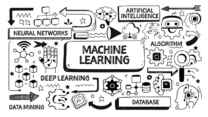
Video&A: Transforming Passive Viewers into Active Participants in the Digital Age
The digital landscape is undergoing a fundamental shift. We’re moving away from one-directional content consumption toward immersive, participatory experiences. At the heart of this transformation lies video&a—a revolutionary approach that’s redefining how we create, share, and engage with video content in 2025 and beyond.
Unlike traditional videos where viewers simply watch and scroll away, video&a creates a dynamic dialogue between content creators and their audiences. This isn’t just another buzzword in the digital marketing dictionary; it’s a paradigm shift that’s reshaping education, entertainment, business communication, and social media engagement.
Understanding Video&A: More Than Just Interactive Content
The term video&a uses an ampersand (&) to symbolize the critical connection between video content and active participation. But what does the “a” represent? Depending on the context, it can signify:
- Answer – Viewers receive responses to their questions in real-time
- Action – Users take concrete steps like voting, clicking, or making decisions
- Audience – The community becomes an integral part of the content
- Analytics – Data-driven insights that optimize content performance
- Accessibility – Inclusive features that reach diverse global audiences
This multifaceted interpretation reveals the true power of video&a. It’s not merely about adding polls or comment sections—it’s about fundamentally restructuring the relationship between creator and consumer.
The Three Pillars of Effective Video&A Experiences
Every successful video&a implementation rests on three foundational elements that work in harmony:
1. The Video Content Foundation
At its core, video&a still relies on high-quality video content. This could be educational tutorials, product demonstrations, live streams, entertainment content, or corporate training materials. The difference lies in how this content is structured—designed from the ground up with interaction points built into the narrative flow.
2. The Interactive Technology Layer
This is where the ampersand (&) comes alive. Advanced platforms now enable seamless integration of interactive elements such as clickable hotspots, branching storylines, embedded quizzes, real-time polling, and question boxes. Technologies like artificial intelligence, augmented reality, and machine learning are making these interactions increasingly sophisticated and personalized.
3. The Participatory Action Component
The final pillar transforms viewers from passive spectators into active participants. They answer questions that shape the content, make choices that determine storyline outcomes, provide instant feedback through reactions, and engage with other community members in real-time.
Why Traditional Video Content Is No Longer Enough
Consider these compelling statistics that highlight the urgency of adopting video&a approaches:
| Metric | Traditional Video | Video&A |
|---|---|---|
| Average Watch Time | 35-45% | 70-85% |
| Engagement Rate | Low to Moderate | High |
| Information Retention | 20-30% | 60-75% |
| Conversion Rate | Difficult to Measure | Trackable and Measurable |
| Viewer Satisfaction | Moderate | Significantly Higher |
These numbers tell a clear story: audiences in 2025 demand more than passive consumption. They want experiences where their input matters, where they feel heard, and where they can influence outcomes.
Video&A Across Industries: Real-World Applications
Revolutionizing Digital Marketing and E-Commerce
Marketing professionals have discovered that video&a dramatically outperforms traditional advertising methods. Shoppable videos allow customers to click on products within the video and purchase instantly, eliminating friction in the buying journey. Brands are using interactive product demonstrations where viewers can choose which features to explore, creating personalized discovery experiences.
Example: A fashion retailer creates a video lookbook where viewers can click on any outfit to see different color options, pricing, and available sizes—all without leaving the video player. This approach has shown conversion rate increases of up to 300% compared to standard product videos.
Transforming Education and E-Learning
Educational institutions and online learning platforms are leveraging video&a to combat student disengagement. Instead of lengthy lecture recordings, educators now create interactive lessons with checkpoint quizzes, scenario-based decision trees, and instant feedback mechanisms.
Example: A medical school uses video&a for anatomy lessons. Students watch surgical procedures and are periodically asked to identify structures or predict the next step. Those who answer incorrectly receive additional explanatory content before continuing, ensuring mastery before progression.
Elevating Entertainment and Streaming Content
The entertainment industry is embracing choose-your-own-adventure formats that give audiences control over narrative direction. Streaming platforms are experimenting with live concerts where fans vote for the next song, reality shows where viewers influence contestant outcomes, and interactive documentaries with multiple perspective paths.
Enhancing Corporate Training and Onboarding
Companies are replacing dull training manuals with video&a modules that simulate real workplace scenarios. Employees make decisions in branched scenarios, receive immediate feedback, and see the consequences of their choices in a safe learning environment.
The Technology Powering Video&A Innovation

Several technological advances are making video&a more accessible and powerful than ever before:
Artificial Intelligence and Personalization
AI algorithms analyze viewer behavior patterns to automatically adjust content delivery. If a viewer consistently engages with certain topics or skips others, the system adapts future content recommendations and even modifies the current experience in real-time.
Virtual and Augmented Reality Integration
VR and AR technologies are taking video&a into immersive three-dimensional spaces. Users can explore 360-degree environments, manipulate virtual objects, and experience spatial audio that responds to their movements and choices.
Real-Time Analytics and Feedback Loops
Modern video&a platforms provide creators with granular data about viewer interactions. Which decision points generated the most engagement? Where did viewers drop off? What questions were asked most frequently? This data enables continuous content optimization.
Implementing Video&A: Practical Steps for Creators
If you’re ready to incorporate video&a into your content strategy, follow these foundational steps:
- Start with existing platforms: Instagram, Facebook, YouTube, and TikTok all offer built-in interactive features like polls, question stickers, and live Q&A capabilities. Begin experimenting with these before investing in specialized software.
- Design for interaction from the beginning: Don’t treat interactivity as an afterthought. Structure your content with natural pause points where viewer input makes sense and adds value.
- Keep interactions meaningful: Every interactive element should serve a purpose—whether educational, entertaining, or decision-making. Avoid adding interaction for its own sake.
- Test and iterate based on data: Use analytics to understand which interactive elements resonate with your audience and which fall flat. Continuously refine your approach.
- Ensure accessibility: Include captions, audio descriptions, and keyboard navigation options so all viewers can participate fully.
The Future of Video&A: What’s Coming Next
As we look toward the remainder of 2025 and beyond, several trends are emerging in the video&a space:
Hyper-personalization through AI: Videos will automatically adapt not just to viewer preferences, but to their mood, time of day, device type, and even emotional responses detected through camera and biometric sensors.
Cross-platform interactive experiences: A video&a experience might begin on mobile, continue on desktop, and conclude in a VR headset, with the interactive narrative seamlessly flowing across devices.
Blockchain-verified participation: Viewers may receive digital credentials or NFTs for completing interactive learning modules or participating in exclusive video&a events, creating verifiable records of engagement.
Voice and gesture-controlled interactions: As smart displays and voice assistants become more sophisticated, viewers will control video&a experiences through natural speech and physical gestures rather than clicking buttons.
Overcoming Common Video&A Challenges
While video&a offers tremendous benefits, creators should be aware of potential obstacles:
- Production complexity: Interactive videos require more planning, branching logic, and testing than traditional content. Start simple and gradually increase complexity.
- Technology barriers: Not all viewers have the latest devices or high-speed internet. Ensure your interactive content degrades gracefully for users with technical limitations.
- Data privacy concerns: Collecting viewer interaction data requires transparent privacy policies and secure data handling practices.
- Content fatigue: Too many interaction prompts can overwhelm viewers. Balance engagement opportunities with natural viewing flow.
Conclusion: Embracing the Video&A Revolution
Video&a represents far more than a technological upgrade—it’s a fundamental reimagining of how digital content creates value. By transforming passive viewers into active participants, it deepens engagement, improves learning outcomes, drives business results, and builds stronger communities around shared experiences.
Whether you’re an educator seeking better student outcomes, a marketer aiming for higher conversion rates, an entertainer building loyal fanbases, or a business professional improving training effectiveness, video&a offers tools and strategies that align with how modern audiences want to consume content.
The question is no longer whether to adopt video&a approaches, but how quickly you can integrate them into your content strategy. Those who embrace this shift early will establish competitive advantages that become increasingly difficult to replicate as the medium matures.
The future of digital content is not something we watch—it’s something we experience, shape, and participate in together. That future is video&a












